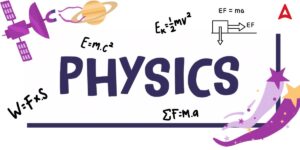Molecular Basis of Inheritance Notes: In the NEET Botany Syllabus, one of the most crucial units/chapters is the Molecular Basis of Inheritance. Over the years, the NEET UG Exam has seen an average of 6.8 questions per year, accounting for roughly 13.23% of the total biology questions. The molecular basis of inheritance focuses on the structure of DNA, its role in storing genetic information, and how it is transmitted to offspring. It discusses DNA replication, transcription, translation, and mutations. We have shared the NEET Biology Notes for Molecular Basis of Inheritance in very easy and simple language, ensuring that you do not face any difficulty with this topic.
Molecular Basis of Inheritance Notes for NEET Biology
The Molecular Basis of Inheritance is a chapter from an essential topic in the NEET Biology Syllabus. Questions from this chapter come frequently on the exam, particularly on replication, the genetic code, and gene expression. The NEET Notes for the Molecular Basis of Inheritance simplify difficult processes such as replication and transcription with flowcharts and graphics.
Molecular Basis of Inheritance NEET Notes is concerned with how genetic information is stored, expressed, and transmitted from one generation to the next at the molecular level. It mostly focuses on:
- DNA as genetic material
- Structure of DNA and RNA and DNA packaging;
- DNA replication
- Central dogma
- Transcription
- Genetic code
- Translation
- Gene expression and regulation
- DNA fingerprinting
Molecular Basis of Inheritance NEET Notes
The molecular basis of inheritance is essential for students studying for NEET since it covers the fundamental ideas of genetics. Students studying for the NEET 2026 can find thorough notes on the molecular basis of inheritance below.
THE DNA
DNA is a long polymer of deoxyribonucleotides. Number of nucleotides (or a pair of nucleotide referred to as base pairs) present in it defined the length of DNA. This also is the characteristic of an organism. For example, a bacteriophage known as ϕ × 174 has 5386 nucleotides, Bacteriophage lambda has 48502 base pairs (bp), Escherichia coli has 4.6 × 10 bp, and haploid content of human DNA is 3.3 × 10 bp
Structure of Polynucleotide Chain
- A nucleotide has three components – a nitrogenous base, a pentose sugar (ribose in case of RNA, and deoxyribose for DNA), and a phosphate group.
- There are two types of nitrogenous bases – Purines (Adenine and Guanine), and Pyrimidines (Cytosine, Uracil and Thymine). Cytosine is common for both DNA and RNA and Thymine is present in DNA. Uracil is present in RNA at the place of Thymine.
- A polynucleotide chain shows the following types of linkage or bond in its components:
I. N-glycosidic linkage: A nitrogenous base is linked to the pentose sugar through a N-glycosidic linkage to form a nucleoside. Purine nucleosides have 1′-9 glycosidic linkage (carbon 1′ of sugar and 9 position of A/G). Pyrimidine nucleosides have 1′- 1 linkage i.e., sugar carbon 1′ and 1 position of
T/C.
II. Phosphoester linkage: When a phosphate group is linked to 5′ OH of a nucleoside through phosphoester linkage a corresponding nucleotide is formed. Two nucleotides are linked through 3′- 5′ phosphodiester linkage to form a dinucleotide - A polymer thus formed has at one end a free phosphate moiety at 5′ -end of sugar, which is referred to as 5′-end of polynucleotide chain.
- Similarly, at the other end of the polymer the sugar has a free OH of 3′ C group which is referred to as 3′ – end of the polynucleotide chain.
- The backbone of a polynucleotide chain is formed due to sugar and phosphates.
- The nitrogenous bases linked to sugar moiety project from the backbone
RNA WORLD
RNA was the first genetic material. Evidences suggest that essential life processes (such as metabolism, translation, splicing, etc.), evolved around RNA.
RNA used to act as a genetic material as well as a catalyst. E.g., there are some important biochemical reactions in living systems that are catalysed by RNA catalysts and not by protein enzymes).
RNA being a catalyst was reactive and hence unstable. Therefore, DNA has evolved from RNA with chemical modifications that make it more stable. DNA being double stranded and having complementary strand further resists changes by evolving a process of repair.
REPLICATION
- Watson and Crick had immediately proposed a scheme for DNA replication while proposing the double helical structure of DNA.
- The scheme suggested that the two strands would separate and act as template for the synthesis of new complementary strands.
- After the completion of replication, each DNA molecule would have one parental and one newly synthesised strand. This scheme was termed as semiconservative DNA replication.
TRANSCRIPTION
- The process of copying genetic information from one strand of the DNA into RNA is called transcription.
- Why both strands of DNA not copied during transcription? If both strands act as a template, they would code for RNA molecule with different sequences (Remember complementarity does not mean identical), and in turn, if they code for proteins, the sequence of amino acids in the proteins would be different. Hence, one segment of the DNA would be coding for two different proteins, and this would complicate the genetic information transfer machinery.
- The two RNA molecules if produced simultaneously would be complementary to each other, hence will form double stranded RNA. This would prevent RNA translation into protein.
GENETIC CODE
- DNA (or RNA) carries all genetic information. It is expressed in the form of proteins which are made up of 20 different types of amino acids.
- The information about the number and sequence of these amino acids forming protein is present in DNA and is passed on to mRNA during transcription. Thus, genetic code is inter-relationship between nucleotides sequence of DNA or mRNA and amino acids sequence in a polypeptide.
- It is a mRNA sequence containing coded information for one amino acid and consists of 3 nucleotides.
- The proposition and deciphering of genetic code were most challenging. In a very true sense, it required involvement of scientists from several disciplines – physicists, organic chemists, biochemists and geneticists.
- It was George Gamow, a physicist, who coined the term genetic code and argued that since there are only 4 bases and if they have to code for 20 amino acids, the code should constitute a combination of bases.
- He suggested that in order to code for all the 20 amino acids, the code should be made up of 3 nucleotides.This was a very bold proposition, because a permutation combination of 4 x 4 x 4 (43) would generate 64 codons, generating many more codons than require.
- The important discovery was the result of experiments by Marsh









 CUET Agriculture Syllabus 2026, Pattern,...
CUET Agriculture Syllabus 2026, Pattern,...
 CUET Maths Syllabus 2026 PDF Download - ...
CUET Maths Syllabus 2026 PDF Download - ...
 CUET Physics Syllabus 2026 for PCB and P...
CUET Physics Syllabus 2026 for PCB and P...














